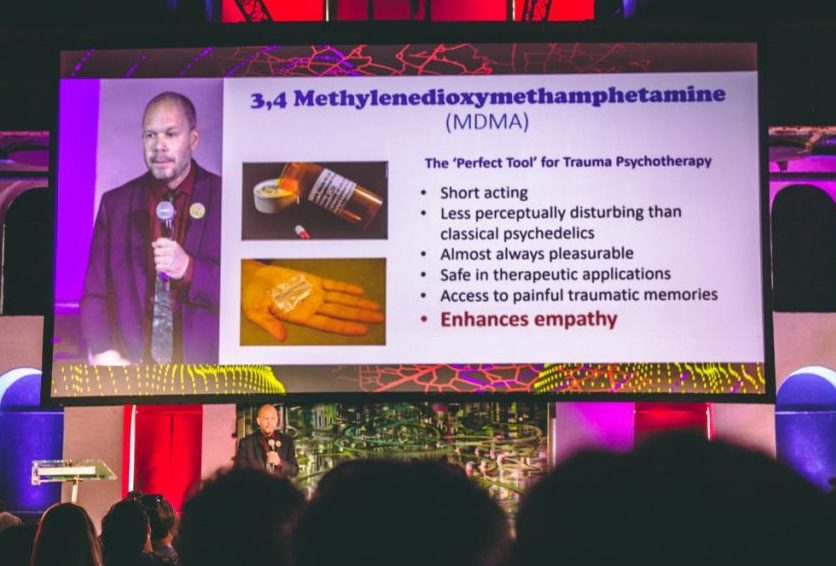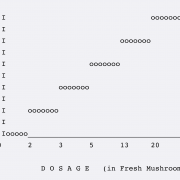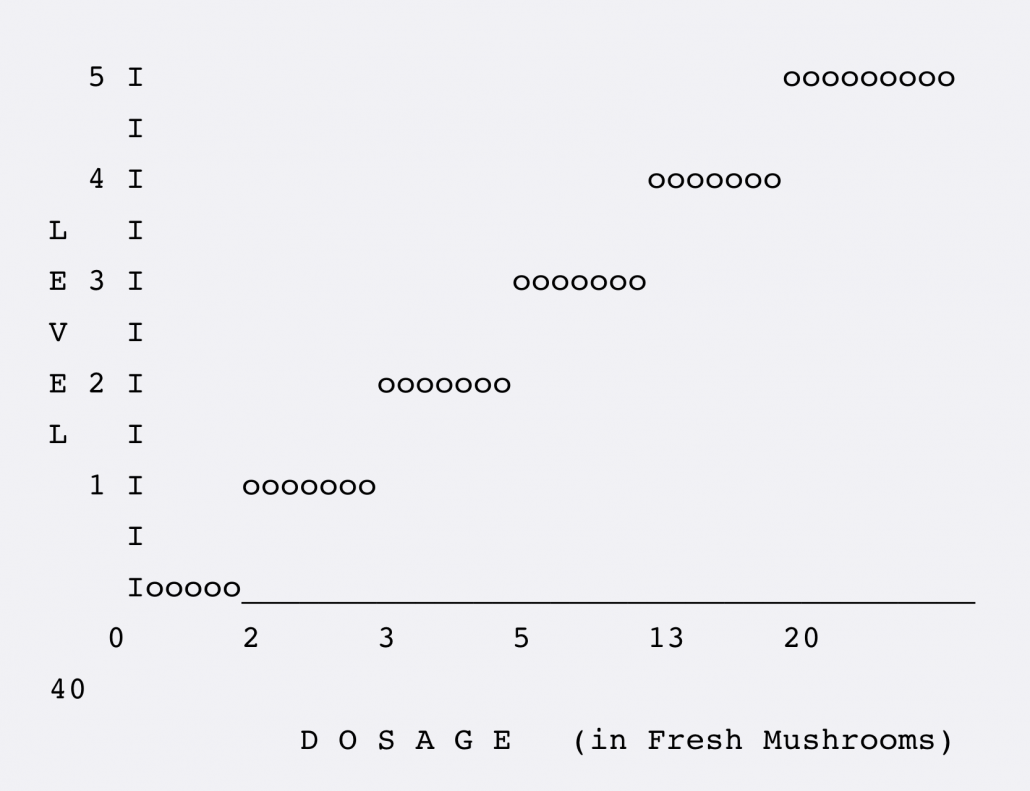Welcome to day 28, PSYJuly 🙂 Sorry today’s post comes late, this one took longer to edit than I anticipated. Today we’re talking psychedelic setting…
Set and setting, yada yada. You’ve heard it. But what to do about setting? How to craft it?
Beyond ambience, one thing is to make the space as practical as possible.
Careful preparation of the setting for a psychedelic session can help to make the experience more seamless and smooth. By removing friction before the start of a session, you can make the most of your trip and the time available. Setting up the space is a way of being a kind and considerate sitter for yourself ahead of time. It’s giving a gift to your future self and building a friendly relationship with your shamanic persona.
To illustrate, I’d like to introduce three terms to the world of psychedelic setting. These are: stations, spaces, and places.
Stations
- A station is a designated and prepared place for doing a specific action that requires tools.
“I just got an idea! I’m heading to the writing station”
“Hey man, can you set up the dosing station whilst I prepare the food? Nice one.”
Some examples:
- Dosing station
- Writing station
- Music station
- Painting station
- Tea station
- Rolling station
A station, by its nature, has equipment. It should be practical and comfortable. All the tools needed for the task assigned to that station should be located there. It should suit the purpose of its existence.
Each station should be:
- Sufficiently lit
- Prepared for action
- Laid out for optimised used (see places, below)
- Considered (it suits the area)
The station should be sufficiently lit for the action that is to be performed there. For example, if you are writing, you need to be able to clearly see the pad or paper you are using. So, lamps or candles are set up or nearby.
The station should be prepared for action. For example, at a tea station: mugs and a thermos of prepared tea. If it’s a music station, the guitar should be tuned, the picks laid out. If using digital equipment, all audio cables are connected, headphones readied and sound levels set. At a dosing station you should have all the tools needed to prepare and consume doses and boosters. If using ketamine for example, this would include: the substance, a set of scales, an item to crush the substance, a steady hard flat smooth surface to crush it on, a thin item to create lines, and straws for ingestion. It also makes sense for a dosing station to include a logging station. This would include: a log book, a pen, and a watch.
Each station should be laid out and optimised for use. This is covered in places, below.
The location of each station should be considered. What are the possible areas it could be? It should be considered within the entire space and the larger geography in mind. That includes what happens in each station, the implications of that, and its neighbouring stations and spaces.
When placing a station, ask: what’s the upshot of it being here?
If the action is a noisy one, such as singing, or loading up a gas, consider if it is adjacent to neighbours. On a recent weekend in an airbnb, I went to work on a music track where I would be recording vocals (loud ones!). I put the vocal station in the kitchen, as it was a room in the middle of the apartment and only neighboured the bathroom and the living room. It was distanced from neighbours so I could let rip.
If you might be dancing or walking around, consider if there are people on the floor below. You might make an extra padding on the floor by laying down an extra yoga mat or blanket. If you’re using paints, they might get messy. Consider where doors are and where people will be coming in and out of rooms. If you’re gonna be smoking joints, note the smell and smoke. Overall, aim for harmony with the surrounding environment. Take spaces into account.
Spaces
- A space is an area of a session setting.
Spaces are more about the ambience of a region, rather than its practicality for a specific action. Setting space can be thought of as set design. It takes into account the intended atmosphere. A space might be decorated or lit in a certain way.
The benefit of spaces beyond practicality is more opaque. It is more about eliciting certain feelings in certain spaces. Our brains make associations with certain areas. This is why it’s nice to have a room for work and a room for sleep as separate spaces. One is a work space, one is a sleep space, and we set them up to be conducive to their purpose.
In terms of psychedelic setting, examples might be a journey space, or a chill out space.
An example of this would be the quiet room, which when I’ve used it, acts as a chill out space. It would be prepared to be cosy and calm, setting the appropriate tone. If you’re wanting some level of sensory stimulation, you might have some fairy lights blinking, pieces of art hanging up, or engaging music playing.
I was once on a long weekend with friends in the Dutch countryside, where the hosts set up an insanity room for our session. There was a shrine to deity The Hord Lord, and some questions hung up on pieces of paper around the room to challenge visitors. If someone wanted a bit of madness, they just headed to the insanity room. It was pretty funny.
When setting up a space, take into account are the intended atmosphere of the space. What feelings do you want to promote in each space? Relaxation? Stimulation? Fun?
Places
“A place for everything, everything in its place.”
- A place is a designated location for a specific tool or instrument.
Having places for things brings systems thinking to the level of psychedelic setting. It makes tools easy to locate and actions easier to perform.
Firstly, this saves confusion and avoids wasting time looking for things.
You know the situation where you walk into a room to get something, then your mind goes blank and you think ‘what did I come in here for?’. Well when you’re high, this type of misdirection can be heightened and you might even forget that you were even looking for anything at all. This can turn into aimless wandering, which can lead to disorientation, feelings of ungroundedness, confusion and anxiety. You may even come round to the point of asking, ‘what am I doing?’. The answer to which, you may or may not remember.
Another benefit to having set places is that it streamlines actions. For example, imagine the scenario:
A great idea comes to you on that project you’ve been working on for a while. Naturally, you want to note it down. Because you were rushed, you haven’t set up, and because of your altered state, you can’t easily locate your pen. So you begin your search for it, wandering from room to room. You finally locate your pen, which was on the counter in the kitchen, but by then, ten long time-dilated minutes later, you’ve not only lost that precious session time, but even worse, you’ve forgotten the idea you had in the first place.
Let’s contrast that with a prepared station with items in their places:
A great idea comes to you. You walk over to the writing station. You pick up one of your pens from the pile laid beside your open pad of paper, and jot the idea down. Seeing it written down causes other ideas to begin sprouting from it and you see it beginning to grow. You want to see where this goes, so you pick up a larger piece of paper from the pile on the shelf beside you, and place it down to begin a brainstorm. As you get into it, you decide to add images and drawings. You reach over to your left, to the pot of coloured pens, and add some different colours to connect ideas by theme. You run with the ideas until the train loses steam, and then head to the chill space to smoke a joint and wind down.
When choosing places for tools, be like a surgeon laying out their tools on their tray. Consider how and when they will be used. If it’s part of a multi step process, what other tools will you need to use? In what order will you need to use them?
Final thoughts
How you set up and utilise stations, spaces and places will depend on the intention and type of the session.
The concept of stations and places might seem more relevant for sessions where you will be actively doing things which require using tools or instruments, like a creative session, as opposed to a typical psychedelic therapy style session. However, being precise and mindful in preparation shows respect for the session and can help to focus the mind. It’s taking drugs like a nerd. The sense of ‘everything in its right place’, and being fully prepared can help to promote feelings of relaxation. It’s also useful when you come out of journey space to hydrate or go to the bathroom.
This level of preparation is also especially useful for journeys without a sitter, be they solo or with others. It shows love, caring and consideration to your future tripping selves, and in some way it is pro-actively tripsitting for your future self. Your tripping self should appreciate that in your heightened state.
By utilising stations, spaces and places into your setting design, you set up to make the most of your session. You optimise your session and increase flow. You allow your mind to focus on what’s important, the content of your mind, rather than logistical considerations.








